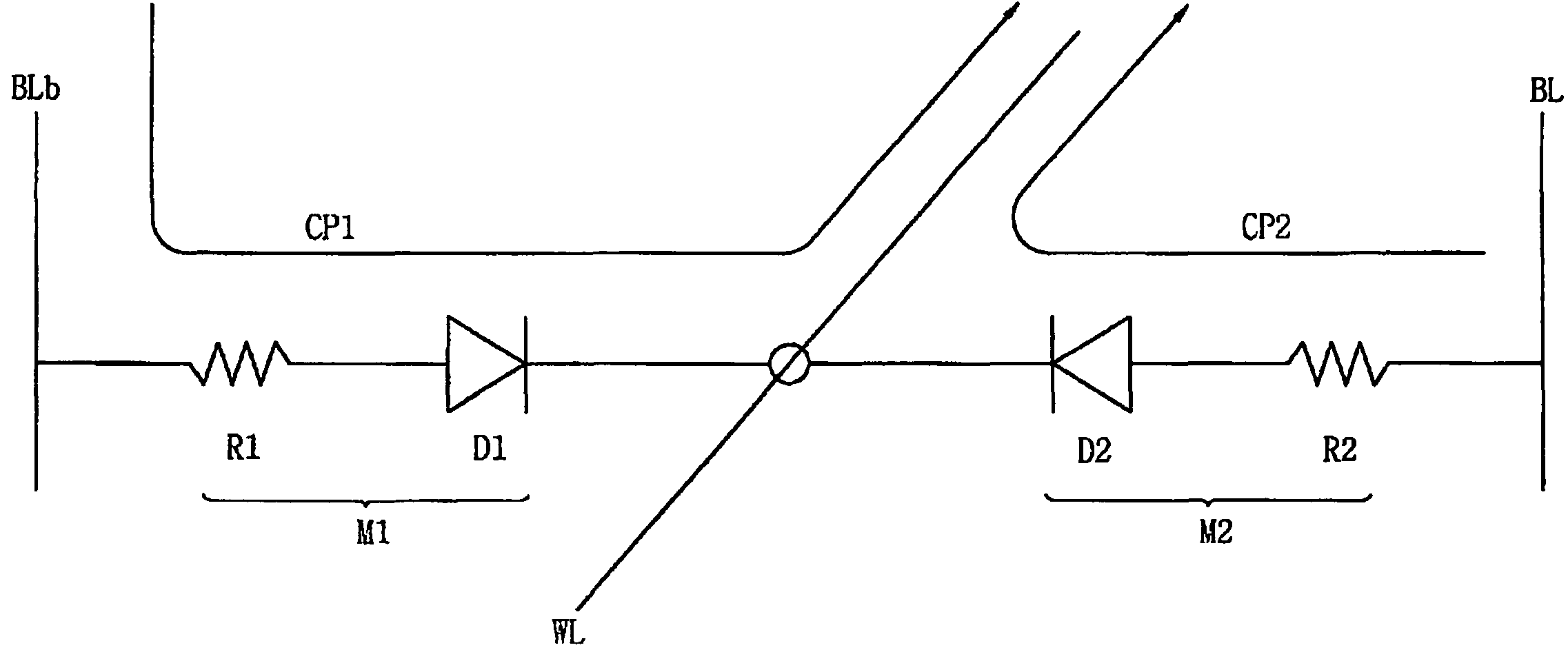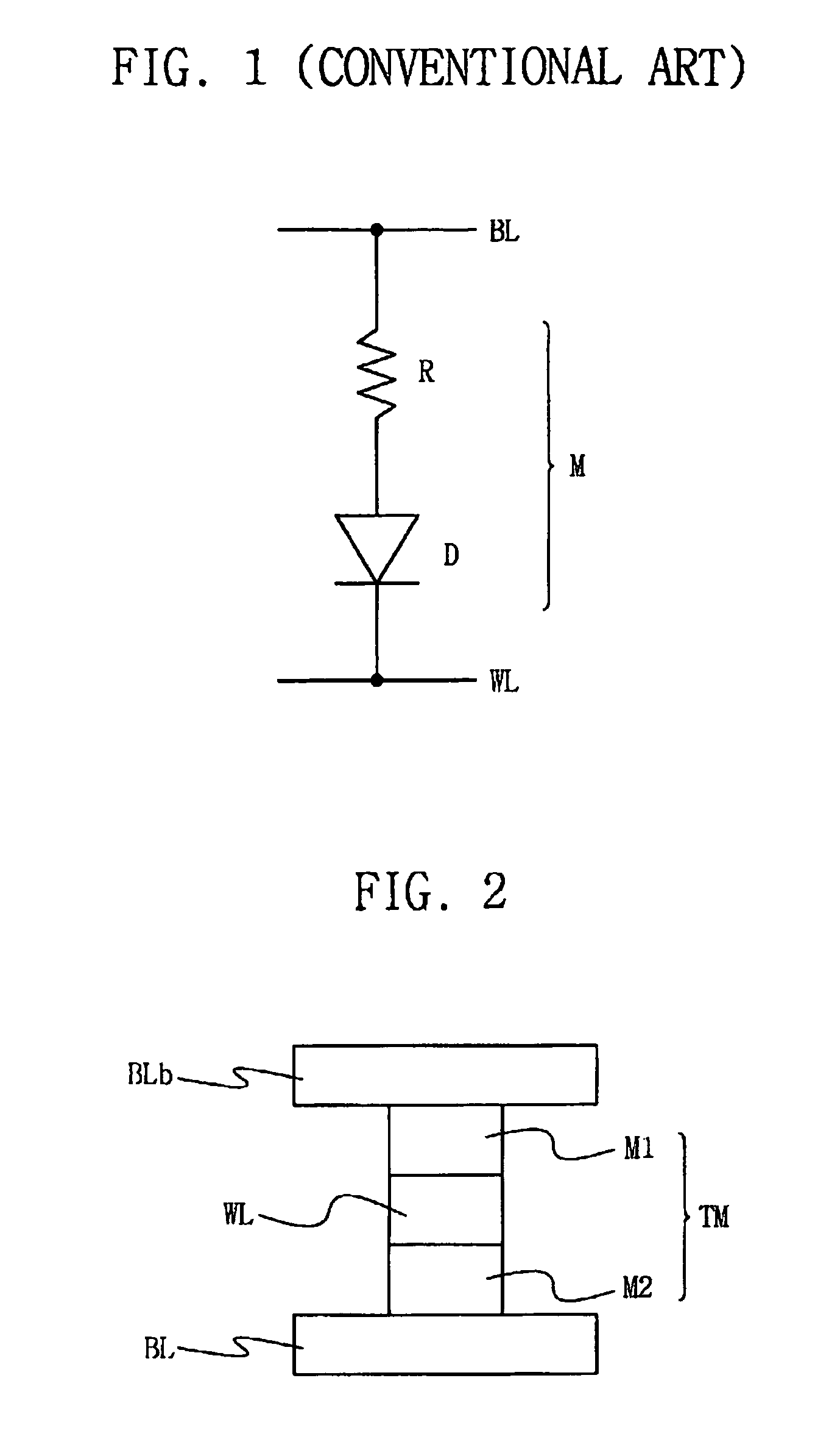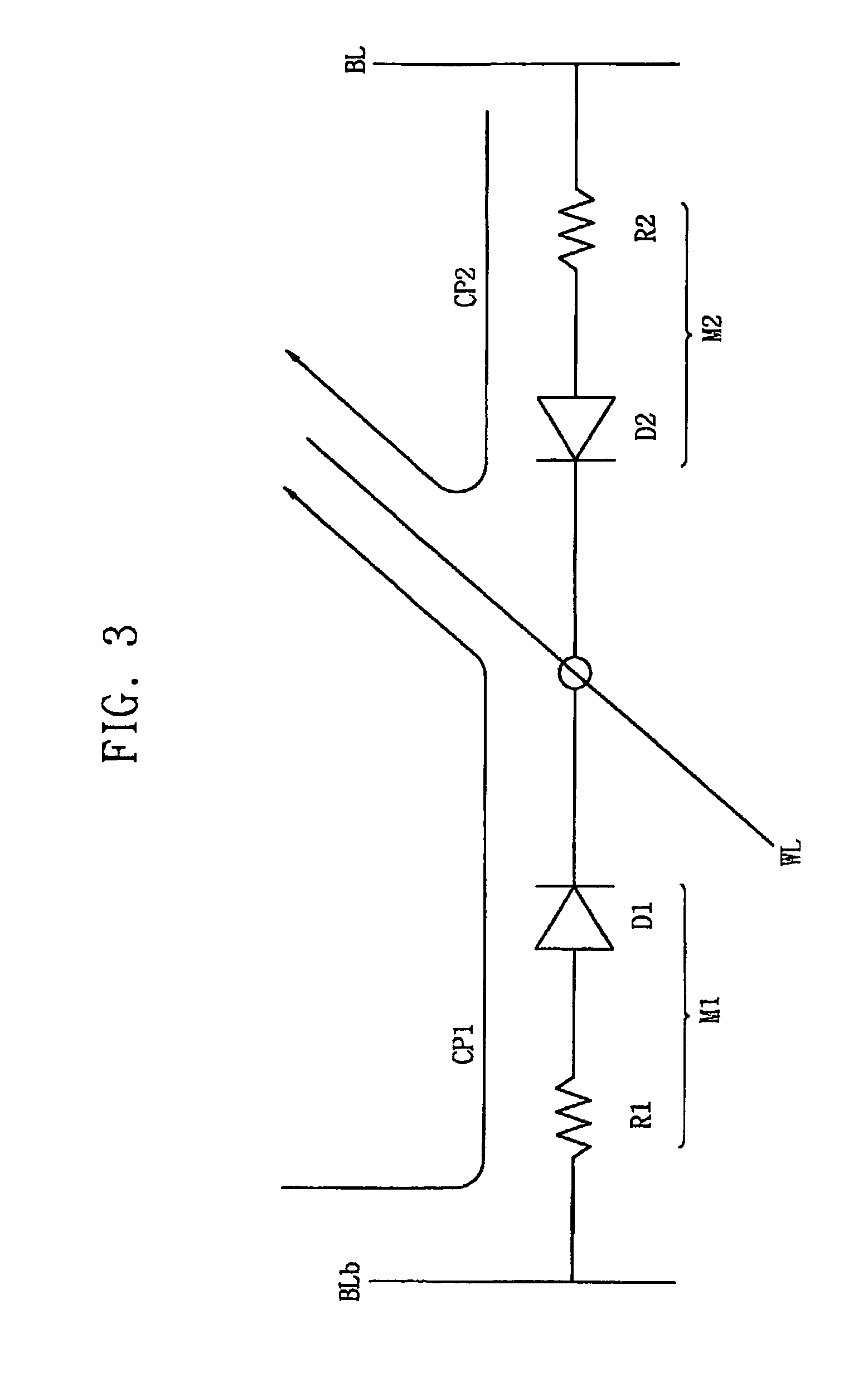Memory cell of a resistive semiconductor memory device, a resistive semiconductor memory device having a three-dimensional stack structure, and related methods
a memory cell and semiconductor technology, applied in static storage, digital storage, instruments, etc., can solve the problems of high operation speed, low power consumption, and the degree of integration of a semiconductor memory device having a two-dimensional structure is approaching an upper limit, so as to improve reliability and high degree of integration
- Summary
- Abstract
- Description
- Claims
- Application Information
AI Technical Summary
Benefits of technology
Problems solved by technology
Method used
Image
Examples
Embodiment Construction
[0040]In the drawings, like reference symbols indicate like or similar components throughout.
[0041]FIG. 2 illustrates the structure of a memory cell of a resistive semiconductor memory device in accordance with an embodiment of the invention.
[0042]As shown in FIG. 2, a memory cell TM in accordance with an embodiment of the invention has a twin cell structure. Thus, memory cell TM can store one more bit of data than a conventional memory cell (e.g., conventional memory cell M of FIG. 1). Memory cell TM comprises a main unit cell M2 connected to a main bit line BL and a sub unit cell M1 connected to a sub bit line BLb. In addition, main unit cell M2 and sub unit cell M1 are each connected to a word line WL (that is, they are each connected to the same word line WL). While the conventional memory cell M described above (with reference to FIG. 1) has one diode D and one variable resistor R, memory cell TM in accordance with an embodiment of the invention has a structure in which main un...
PUM
 Login to View More
Login to View More Abstract
Description
Claims
Application Information
 Login to View More
Login to View More - R&D
- Intellectual Property
- Life Sciences
- Materials
- Tech Scout
- Unparalleled Data Quality
- Higher Quality Content
- 60% Fewer Hallucinations
Browse by: Latest US Patents, China's latest patents, Technical Efficacy Thesaurus, Application Domain, Technology Topic, Popular Technical Reports.
© 2025 PatSnap. All rights reserved.Legal|Privacy policy|Modern Slavery Act Transparency Statement|Sitemap|About US| Contact US: help@patsnap.com



